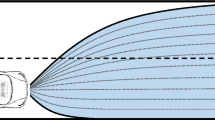Abstract
Evacuation planning is an important part of a hospital’s emergency management plan. In an evacuation the safety and health of patients is the fundamental success parameter. Thus, in this paper we introduce an evacuation model, appropriate for planning and operations, that has the objective of minimizing expected risk, both the threat risk that is forcing the evacuation, and the risk inherent in transporting patients, some in critical condition. Specifically, we study the allocation of patients, categorized by criticality and care requirements, to a limited fleet of vehicles of various capacities and medical capabilities, to be transported to appropriate receiving hospitals considering the current available space in each hospital for each category of patient. The model is an integer program, where the non-linear expected risks are calculated a-priori. This model has a structure that has excellent solution characteristics that permit us to solve large problems in a reasonable time, enabling the model to potentially be used for both planning and operations. To illustrate the solvability of this model and demonstrate its characteristics, we apply it to a realistic case study based on the evacuation of a large regional hospital.
Similar content being viewed by others
References
Bazaraa, M., Jarvis, J., & Sherali, H. (2005). Linear programming and network flows (3rd ed.). New York: Wiley.
Chalmet, L., Francis, R., & Saunders, P. (1982). Network models for building evacuation. Management Science, 28(1), 86–105.
Chavez, C., & Binder, B. (1995). A hospital as victim and responder: the Sepulveda VA Medical Center and the Northridge earthquake. The Journal of Emergency Medicine, 14(4), 445–454.
Chen, L., & Hooks, E. (2008). The building evacuation problem with shared information. Naval Research Logistics, 55(4), 363–376.
Childers, A., Visagamurthy, K., & Taaffe, K. (2009). Prioritizing patients for evacuation from a health-care facility. Transportation Research Record: Journal of the Transportation Research Board, 2137(1), 38–45.
Choi, W., Hamacher, H., & Tufecki, S. (1988). Modeling of building evacuation problems by network flows with side constraints. European Journal of Operational Research, 35, 98–110.
Hamacher, H. W., & Tjandra, S. A. (2001). Mathematical modeling of evacuation problems: a state of the art. In M. Schreckenberg & S. D. Sharma (Eds.), Pedestrian and evacuation dynamics (pp. 227–266). Berlin: Springer.
Hamacher, H., & Tufecki, S. (1987). On the use of lexicographic min cost flows in evacuation modeling. Naval Research Logistics, 34, 487–503.
Han, L., Yuan, F., & Urbanik, T. (2007). What is an efficient evacuation operation? ASCE Journal of Urban Planning and Development, 133(1), 3–8.
Jarvis, J., & Ratliff, H. (1982). Some equivalent objectives for dynamic network flow problems. Management Science, 28(1), 106–109.
Kue, R., Brown, P., Ness, C., & Scheulen, J. (2011). Adverse clinical events during intrahospital transport by a specialized team: a preliminary report. American Journal of Critical Care, 20(2), 153–161.
Schultz, M. C. H., Koenig, M. K. L., & Lewis, M. P. R. J. (2003). Implications of hospital evacuation after the Northridge, California, earthquake. The New England Journal of Medicine, 348(14), 1349–1355.
Sternberg, E., Lee, G., & Huard, D. (2004). Counting crises: US hospital evacuations 1971–1999. Prehospital Disaster Medicine, 19(2), 150–157.
Tayfur, E., & Taaffe, K. (2009). A model for allocating resources during hospital evacuations. Computers and Industrial Engineering, 57(4), 1313–1323.
Toth, P., & Vigo, D. (Eds.) (2002). The vehicle routing problem. Philadelphia: Society for Industrial and Applied Mathematics.
Author information
Authors and Affiliations
Corresponding author
Rights and permissions
About this article
Cite this article
Bish, D.R., Agca, E. & Glick, R. Decision support for hospital evacuation and emergency response. Ann Oper Res 221, 89–106 (2014). https://doi.org/10.1007/s10479-011-0943-y
Published:
Issue Date:
DOI: https://doi.org/10.1007/s10479-011-0943-y




